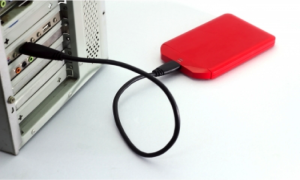 Today’s guest post intrigued us because we know how important it is to back up files on our computers. We tend to put a lot of faith in technology and trust that nothing bad will happen. However, that is not the case and it isn’t uncommon for someone to lose all of their files if they haven’t backed them up. It is especially important to have copies of everything for your business. So, here are some tips on how to back up your computer.
Today’s guest post intrigued us because we know how important it is to back up files on our computers. We tend to put a lot of faith in technology and trust that nothing bad will happen. However, that is not the case and it isn’t uncommon for someone to lose all of their files if they haven’t backed them up. It is especially important to have copies of everything for your business. So, here are some tips on how to back up your computer.
Imagine if you lost your digital documents, music, movies and programs you store on your desktop, laptop, tablet, ultrabook or smartphone. Losing your files and media would be devastating, and it’s entirely possible. Malware, natural disasters, and lost and stolen devices can all lead to data loss. The only way to combat this is to back up your computer’s data.
1. External Hard Disk Drive
One of the most convenient methods of data backup is the external HDD or the external hard disk drive. This device doesn’t require any complicated installation; simply plug it in via the USB cable, plug into a power outlet when necessary and transfer your data. There are models that don’t require you to connect to the electrical outlet, and there are wireless models that don’t require the USB connection.
External drives are capable of storing large quantities of data — sometimes as many as multiple terabytes. These small devices won’t take up much room in your home, office or travel bag. They also let you upload or download large amounts of data at once, which takes up less of your time than other methods do. The one disadvantage is the price, but hard drives have become more affordable in recent years.
2. Flash Drives
Flash drives are more affordable than hard drives and smaller in size physically, so they’re convenient to slip into a drawer, bag or pocket. They connect to your computer or device via the USB port and require no other power source. Flash drives, like hard drives, allow for fast downloading and uploading of data. They are ideal for quickly backing up a project rather than the long-term backup of data.
The drawback of flash drives is that they store a small amount of data in comparison to a hard drive. They still store more than burnable discs; however, you probably won’t be able to back up all of your data on a single flash drive.
3. Burnable Discs
Before flash drives and external drives became as affordable as they are now, the method of choice for digital backup was the burnable disc. It’s still an option today. If your computer has a disc drive with burning capabilities, or if you invest in an external burning disc drive that you can connect via the USB port (and which may require plugging into an outlet as well), you can burn your data onto discs.
CD-Rs and DVD-Rs are cheaper than external drives, but they have three primary drawbacks: They have little room for data (particularly the CD-Rs), they take up more room around your home or office if you burn enough of them, and they take a fair amount of time to burn. CD-Rs and DVD-Rs are also permanent; you cannot delete the data and reuse the disc.
4. Cloud Storage
Cloud storage takes up no physical space in your home or office. When you sign up for a digital backup service via the Internet, the data you upload will be stored remotely. You pay by the month and by the amount of storage space you need. Cloud storage is flexible, and you can purchase storage plans to suit your personal needs. You can also access your digital backup from anywhere you have an Internet connection via a login ID and password.
The drawbacks of storing via the cloud include paying long-term, when an initial larger investment in a physical device would save you a substantial amount of money over time. You’re also relying on a third party to keep your data safe. Cloud storage may also be more than you require if you simply want to back up your personal data.
Whatever method of backup you choose, be sure to shop around online. You don’t have to spend a small fortune to save your data.
About the Author: Amelia Timm is a contributing writer and technology blogger who uses devices such as those found at www.g-technology.com for her data backup needs.